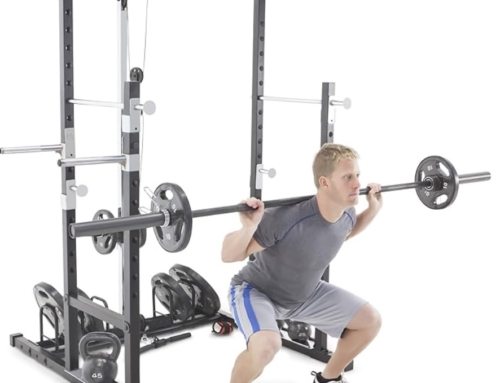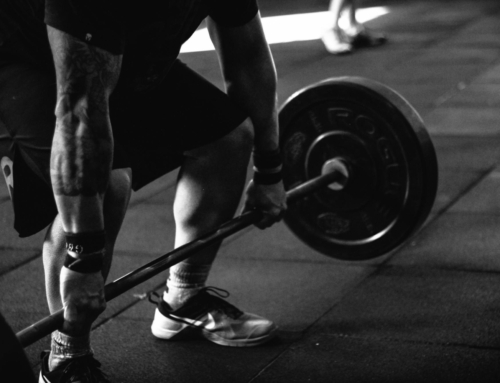If you are like me, somewhat obsessed with fitness and over 40 years old (I am pushing 60 now), you are likely familiar with P90X.
The P90X fitness program, created by Tony Horton, came out about twenty years ago.
It was all the rage, and even some celebrities notably worked out with that program.
P90X was a bunch of different workouts wrapped up into one fitness program that you would perform over 90 days in an effort to build some muscle and lose fat.
It borrowed bits from different fitness disciplines, such as bodybuilding, sports training and yoga.
The idea was that by keeping your muscles confused, you would get into great shape. Well, that is what they were selling anyway.
Yes, you could get into pretty good shape and improve your ability to do many more pushups and pullups. However, from my experience, it didn’t translate into much added strength.
What I remember most from the program was feeling sore much of the time.
And, every time I’d let it go, and start back up, those first couple of weeks were kinda brutal. I would run out of gas during the sessions, and then feel sore as hell for a few days. No bueno.
The issue was that it is mainly a conditioning program involving lots of different exercises. It wasn’t really what I would refer to as “training.”
Training VS Exercise
Don’t get me wrong… exercise is definitely the best medicine.
The problem is, most people who take up an exercise program have a simple goal… lose weight, get in shape, or both.
These are the people who make the annual New Year’s resolution to lose weight or get in shape, join a gym, and stop going after about three weeks.
They don’t have a plan when they start, and when they see only limited progress after what may seem like a herculean effort, they give up.
The main issue is that they don’t have the right mindset.
The second issue is that they don’t have a complete understanding about “training.”
Quoting Jonathon Sullivan, author of The Barbell Prescription, “training is exercise that manipulates training variables as part of a long-term program aimed at the improvement of one or more general fitness attributes.”
Long distance runners train to improve their endurance.
Sprinters train to improve their power and speed.
Fighters train to improve their power, speed and endurance.
When you start out training, you start by building a foundation.
A strength athlete will go to the gym, start with conservative weights, and add weight to the bar each workout.
Over time, it becomes more and more difficult to add weight to the bar. Training variables must now be manipulated more.
Someone who has trained for years will find it difficult to make new PRs more than every six months.
Their training is focused on attaining that level by continuing to build on their foundation, and then training to peak, possibly for a competition.
Endurance and other athletes are the same.
How often does a runner at any distance run a new PR fast time?
At the elite level, not very often. Sometimes it takes years.
With that said, novice trainees will make a new PR EVERY workout for a few months, until the weight on the bar gets too heavy.
At this point, their training program is pretty simple… do 3 sets of five reps and add weight to the bar each workout.
One that gets difficult, they may switch to doing five sets of three reps in order to continue to add weight to the bar.
Down the road, it will be necessary to have some “lighter” training sessions to help them recover both physically and mentally from their workouts.
However, they are continuing to train, rather than just show up at the gym to work out.
Training for the Master Athlete
The Master Athlete, or Athlete of Aging as Barbell Prescription author Jonathon Sullivan refers to his clients (typically over 50 years old), has a different goal… have a good quality of life in case they live to an advanced age.
To ensure that they retain as much mobility as possible, it is necessary to incorporate strength training into their lifestyle.
Strength training is the best way to combat the issues that arise with aging… loss of muscle mass, lower metabolism, lower testosterone, loss of bone density, etc.
When combined with appropriate conditioning, you have powerful medicine to help combat all of these issues.
Final Thoughts
If you are ready to take the step to making improvements in your fitness, adopt the training mindset, rather than the mindset of “getting in shape.”
Follow a program to achieve your goals.
If strength training is part of your program, follow a program to help you get stronger.
Keep a journal to record all your sessions. Include how much you lifted for how many sets and how difficult those sets felt.
If you are training to improve your conditioning, follow a program for that too. Don’t just get on the treadmill and try and bang out three miles.
Lastly, if you really have no clue where to start, I can help. Check out my Master Athlete training program.
Get it done!
Discover more from Scott Allan Cole
Subscribe to get the latest posts sent to your email.






Leave A Comment